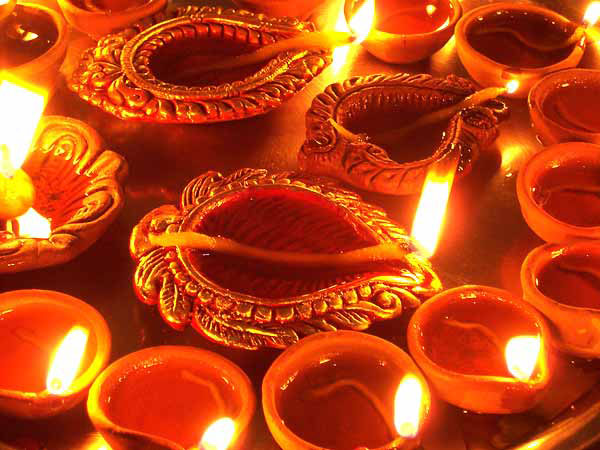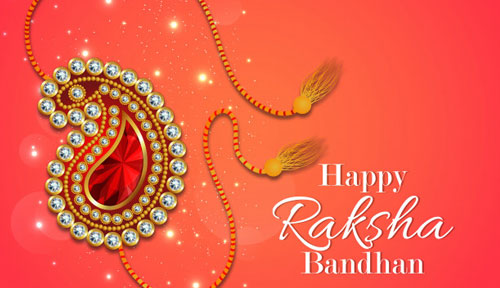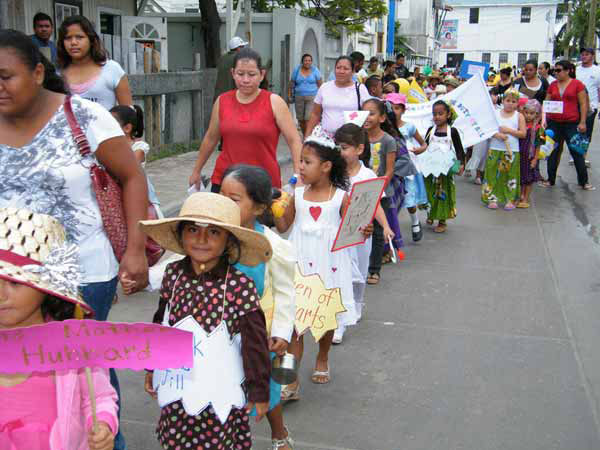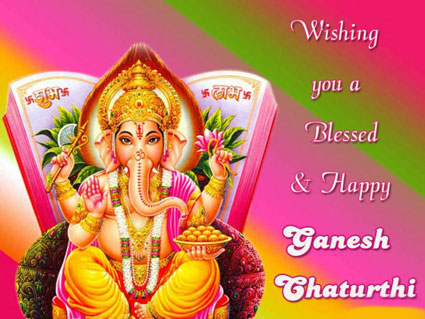Mundan is one of the important rituals performed by Hindus. Find out the importance of the first head shave of the baby and the ritual of keeping tuft of hair on the crown of the head. Chudakarana is the Sanskrit word for Mundan or the first hair-cut of the baby. The literal meaning of Chudakarana is arranging the hair tuft or tonsuring. This is a ritualistic practice followed by most Hindus, where parents are very particular about performing this act with all the regular norms. This is an act that is also observed as per the points mentioned in the scriptures or shastras. If you look at the Grihya Sutra, Chudakarana should be done after the child completes a year and it must not be later than three years. In this ritual, the entire head is shorn of the hair leaving only the Chuda or the Shikha, which is the tuft of hair on the crown of the head. In this articleThe Principal Features of ChudakaranaCurrent Rituals Followed by PanditsRitual of Keeping a TuftWhat is the Essence of Chudakarana?Places for Performing ChudakaranaThe Principal Features of Chudakarana The manner in which the Chuda is arranged is the most vital part of Chudakarana. According to the Vedic shastras, this arrangement differs in different sects of the Hindu religion. Every child is believed to be born in a certain Gotra or ‘family of ancestors’, that is, the Gotra of the father. The Chudas consist of a certain number of Pravaras, or tufts that is in sync with the respective Gotra of the baby. Current Rituals Followed by Pandits These days there have been a lot of leniency in the practice and Pandits or experts in the shastras are of the opinion that the rules can be relaxed or changed as and when they deem it fit. So there is no hard and fast rule, but the adherence to the customary rituals and the associated Pujas are nonetheless performed with much devotion. After all the sole objective of the Chudakarana is to ensure and pray to the Gods to bless the baby and pray that the baby grows up into a healthy and spiritual individual free from sins and all that impact the goodness of life. Ritual of Keeping a Tuft We find that in northern India, the keeping of a single tuft is almost a norm. But if you look at the states of southern India, you will find that the adherence to the rule of keeping the number of tufts as per the Gotras, is still maintained by the people. What is the Essence of Chudakarana? It is believed that hair on the body is basically a continuation of the past life, its bad traits that are undesirable for the well-being of the current birth. So Chudakarana is precisely a measure adopted to do away or reduce the impact of those undesirable traits. As the Mundan is performed, the baby is made to move into the future or the current life. The Mundan is actually a metaphoric activity that symbolises freedom from the past life and its traits. Places for Performing Chudakarana Chudakarana is often a big ritualistic affair on the Ganges and especially in Hrishikesh and Hardwar. But many families opt to perform this ritual in their homes by themselves or calling a priest over. This is done regardless of the gender and a sort of ‘must-do’ activity for young boys and girls. Vedic Mantras and prayers are chanted admist the blowing of the conch shells as the Mundan or the tonsure is performed. The hair is then offered to the holy waters of the Ganges at the moment or later on.Frequently Asked Questions (FAQs) on Chudakarana or MundanLet us take a quick look at frequently asked questions (FAQs) on Chudakarana or Mundan.When is the right time to perform Chudakarana or Mundan ceremony?Ideally, Chudakarana or Mundan ceremony is done after the baby turns a year old. However, in some Indian households it is also carried out when the baby completes the first 6 months of his or her age.What is the significance of Chudakarana or Mundan ceremony as per Hindu customs and traditions?Chudakarana or Mundan is carried out to remove the hair completely from the babys head. It is believed that a babys first hair is linked with his or her past life Karmas, pain and sufferings. Therefore, a babys head is completely tonsured after he or she turns 6 months or 1 year old. This Indian tradition is carried out so that the baby is released from the Karmas, pain and sufferings from his or her past life.Is it necessary to shave the babys head completely during the Mundan or Chudakarana ceremony?The essence of the Mundan or Chudakarana ceremony is to shave the babys head completely. Therefore, without the complete head shave of the baby the Mundan or Chudakarana ceremony would be incomplete.How is Chudakarana or Mundan ceremony performed?In the olden days, Mundan or Chudakarana ceremonies used to be carried out on the banks of river Ganga or Ganges. However, in today’s times it is practically not possible to visit the banks of river Ganges to carry out this ceremony. Therefore, the families prefer to carry out this ceremony near any of its tributaries or nearby seashores, temples or shrines or at home. A Pandit or a Brahmin is called to do the Puja.After the rituals that are associated with this ceremony are carried out by the Pandit or the Brahmin, head shaving is done by the barber. Usually, as per the Hindu rituals, the baby is placed on the lap of his or her maternal uncle while carrying out the tonsure. After the tonsure is done, sandalwood and turmeric paste is applied on the head of the baby in order to soothe the irritation. Sweet dishes and delicacies are prepared at home to mark one of the important events in the baby’s life.Which are the auspicious days for carrying our Mundan or Chudakarana ceremony?Dussehra or Gudi Padwa are considered auspicious days for carrying out Mundan or Chudakarana ceremonies. Parents can choose from any of the two days for carrying out this ceremony. They can also ask the Brahmin or Pandit to check the Panchangam for the auspicious days that can be preferred for performing this ceremony.Which days are generally preferred for doing baby’s Mundan or Chudakarana?The days like Sunday, Wednesday and Friday are considered good for carrying out head shave, Mundan or Chudakarana of the baby.Which days should be avoided for carrying out a Mundan or Chudakarana ceremony?A baby’s head shave, Mundan or Chudakarana should not be done on days like Monday, Thursday and Saturday.How to prepare for the babys Chudakarana or Mundan ceremony?Before you decide the date for performing the Mundan ceremony, make sure that your baby is in his or her good health. Give a good head bath to your baby on the day of Mundan or Chudakarana ceremony. Wash hair in such a way that the oil is completely washed off the hair of the baby. Feed him or her well before the ceremony begins. Keep his or her favourite toys handy so that the baby is occupied well when the head shave ceremony is being performed. Ask the Pandit or Brahmin about the items that would be required for performing the Puja at home if you are performing the ceremony at home.What precautions should be taken while Shaving baby’s head while performing Mundan or Chudakarana ceremony?You must ensure that the barber who will be shaving your baby’s head is a professional and has good experience is shaving heads of babies. Ensure that he is adhering to all the safety and hygiene standards. Check that he is using a new blade for shaving your baby’s head and his equipment are clean and hygienic. Ensure that you make proper sitting arrangements for the barber and the baby. Keep towels and wipes handy so that you can use them immediately whenever the need arises.Can parents use an electric hair clipper for tonsuring a babys head during the Mundan or Chudakarana ceremony?If your hairdresser is having a good experience of using an electric hair clipper you can prefer it for tonsuring your baby’s head. Make sure that you hire an experienced hairdresser who specializes in tonsuring baby’s head with the help of electric clippers. Ideally, for shaving a babys head during the Mundan ceremony a traditional head shaving method is preferred in many households.How to take care of the babys head after performing the babys head shave, Mundan or Chudakarana ceremony?After a babys head is shaved during Chudakarana or Mundan ceremony, his or her head should be properly covered to protect it. Avoid exposing his or her head to an environment which is too hot or too cold. For example, do not let your baby sleep in a room where the air-conditioner is on or do not expose his or her head in hot sun. Make him or her wear proper headgear if you are exposing him or her to such an environment. A good cap or head gear can be used to cover his or her head. To stimulate quicker and thicker hair growth, you can apply coconut oil on your baby’s head. You can gently massage his or her head with coconut oil to not only stimulate the hair growth but also moisturise his or her skin.Is it good to perform head shave on the day on which baby is born?According to certain Hindu beliefs, it is not good or inauspicious to shave baby’s head on the day on which baby is born.How to know about the Shubh Muhurat or auspicious time for performing baby’s Mundan or Chudakarana ceremony?You can consult a Brahmin, a Pandit or an Astrologer to find about the Shubh Muhurat or auspicious time for performing baby’s Mundan or Chudakarana ceremony.What is the age limit for performing Mundan or Chudakarana ceremony?Mundan or Chudakarana ceremonies can be performed between 6 months to 3 years of baby’s age. Different communities have different beliefs regarding the age at which the Mundan or Chudakarana ceremony is performed. So, it is necessary to get the age limit confirmed from the Pandit, Brahmin or the Priest of that particular community. Mundan ceremony can be performed up to the age of 3 years, the first hairs of the baby should be maintained till that time. If it is not possible to maintain the first hair for the longer time, Mundan or Chudakarana ceremony can be done earlier.Can Mundan or Chudakarana ceremonies be performed on full moon day or new moon day?Mundan or Chudakarana ceremony should not be performed on no moon day (Amavasya) or full moon day (Purnima). It is considered inauspicious to do head shave, Mundan or Chudakarana on no moon day (Amavasya) or full moon day (Purnima). The body parts like hair and nails are connected to the Nadis in our body. Cutting them on no moon day (Amavasya) or full moon day (Purnima) can affect the health of the individual.What is done to the hair of the baby after performing Mundan or Chudakarana ceremony?The first hairs of the baby which are removed during the Chudakarana or Mundan ceremony are immersed in the holy water of Ganga. If it is not possible to immerse the hair in the holy water of Ganga it can be immersed in the water of nearby seashore or the tributaries of river Ganga.Does Mundan or Chudakarana helps to grow hair?There are some beliefs that doing Mundan or Chudakarana can help in the growth of thick hair. To speed up the hair growth it is necessary for parents to provide nutritious diet to the child. The hair growth and the quality of the babys hair also depends on the genes of the child.Mundan or Chudakarana is one of the important life events. Therefore, you must follow your family rituals the right way while performing this ceremony. Plan this event in a special way. Indian households do not celebrate this event in a big way but you can invite your near and dear ones. Create special memories during this event so that your child can cherish these memories throughout his or her life.What is the objective of Mundan or Chudakarana? What are features of Chudakarna? Where is Mundan or Chudakarana ideally done? Discuss here.
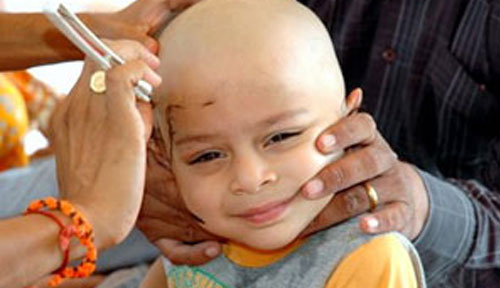 Mundan is one of the important rituals performed by Hindus. Find out the importance of the first head shave of the baby and the ritual of keeping tuft of hair on the crown of the head.
Mundan is one of the important rituals performed by Hindus. Find out the importance of the first head shave of the baby and the ritual of keeping tuft of hair on the crown of the head. Chudakarana is the Sanskrit word for Mundan or the first hair-cut of the baby. The literal meaning of Chudakarana is arranging the hair tuft or tonsuring. This is a ritualistic practice followed by most Hindus, where parents are very particular about performing this act with all the regular norms. This is an act that is also observed as per the points mentioned in the scriptures or
shastras. If you look at the
Grihya Sutra, Chudakarana should be done after the child completes a year and it must not be later than three years. In this ritual, the entire head is shorn of the hair leaving only the
Chuda or the
Shikha, which is the tuft of hair on the crown of the head.
The Principal Features of Chudakarana
The manner in which the Chuda is arranged is the most vital part of Chudakarana. According to the Vedic shastras, this arrangement differs in different sects of the Hindu religion. Every child is believed to be born in a certain Gotra or ‘family of ancestors’, that is, the Gotra of the father. The Chudas consist of a certain number of Pravaras, or tufts that is in sync with the respective Gotra of the baby.
Current Rituals Followed by Pandits
These days there have been a lot of leniency in the practice and Pandits or experts in the shastras are of the opinion that the rules can be relaxed or changed as and when they deem it fit. So there is no hard and fast rule, but the adherence to the customary rituals and the associated Pujas are nonetheless performed with much devotion. After all the sole objective of the Chudakarana is to ensure and pray to the Gods to bless the baby and pray that the baby grows up into a healthy and spiritual individual free from sins and all that impact the goodness of life.
Ritual of Keeping a Tuft
We find that in northern India, the keeping of a single tuft is almost a norm. But if you look at the states of southern India, you will find that the adherence to the rule of keeping the number of tufts as per the Gotras, is still maintained by the people.
What is the Essence of Chudakarana?
It is believed that hair on the body is basically a continuation of the past life, its bad traits that are undesirable for the well-being of the current birth. So Chudakarana is precisely a measure adopted to do away or reduce the impact of those undesirable traits. As the Mundan is performed, the baby is made to move into the future or the current life. The Mundan is actually a metaphoric activity that symbolises freedom from the past life and its traits.
Chudakarana is often a big ritualistic affair on the Ganges and especially in Hrishikesh and Hardwar. But many families opt to perform this ritual in their homes by themselves or calling a priest over. This is done regardless of the gender and a sort of ‘must-do’ activity for young boys and girls. Vedic Mantras and prayers are chanted admist the blowing of the conch shells as the Mundan or the tonsure is performed. The hair is then offered to the holy waters of the Ganges at the moment or later on.
Frequently Asked Questions (FAQs) on Chudakarana or Mundan
Let us take a quick look at frequently asked questions (FAQs) on Chudakarana or Mundan.
When is the right time to perform Chudakarana or Mundan ceremony?
Ideally, Chudakarana or Mundan ceremony is done after the baby turns a year old. However, in some Indian households it is also carried out when the baby completes the first 6 months of his or her age.
What is the significance of Chudakarana or Mundan ceremony as per Hindu customs and traditions?
Chudakarana or Mundan is carried out to remove the hair completely from the baby's head. It is believed that a baby's first hair is linked with his or her past life Karmas, pain and sufferings. Therefore, a baby's head is completely tonsured after he or she turns 6 months or 1 year old. This Indian tradition is carried out so that the baby is released from the Karmas, pain and sufferings from his or her past life.
Is it necessary to shave the baby's head completely during the Mundan or Chudakarana ceremony?
The essence of the Mundan or Chudakarana ceremony is to shave the baby's head completely. Therefore, without the complete head shave of the baby the Mundan or Chudakarana ceremony would be incomplete.
How is Chudakarana or Mundan ceremony performed?
In the olden days, Mundan or Chudakarana ceremonies used to be carried out on the banks of river Ganga or Ganges. However, in today’s times it is practically not possible to visit the banks of river Ganges to carry out this ceremony. Therefore, the families prefer to carry out this ceremony near any of its tributaries or nearby seashores, temples or shrines or at home. A Pandit or a Brahmin is called to do the Puja.
After the rituals that are associated with this ceremony are carried out by the Pandit or the Brahmin, head shaving is done by the barber. Usually, as per the Hindu rituals, the baby is placed on the lap of his or her maternal uncle while carrying out the tonsure. After the tonsure is done, sandalwood and turmeric paste is applied on the head of the baby in order to soothe the irritation. Sweet dishes and delicacies are prepared at home to mark one of the important events in the baby’s life.
Which are the auspicious days for carrying our Mundan or Chudakarana ceremony?
Dussehra or Gudi Padwa are considered auspicious days for carrying out Mundan or Chudakarana ceremonies. Parents can choose from any of the two days for carrying out this ceremony. They can also ask the Brahmin or Pandit to check the Panchangam for the auspicious days that can be preferred for performing this ceremony.
Which days are generally preferred for doing baby’s Mundan or Chudakarana?
The days like Sunday, Wednesday and Friday are considered good for carrying out head shave, Mundan or Chudakarana of the baby.
Which days should be avoided for carrying out a Mundan or Chudakarana ceremony?
A baby’s head shave, Mundan or Chudakarana should not be done on days like Monday, Thursday and Saturday.
How to prepare for the baby's Chudakarana or Mundan ceremony?
Before you decide the date for performing the Mundan ceremony, make sure that your baby is in his or her good health. Give a good head bath to your baby on the day of Mundan or Chudakarana ceremony. Wash hair in such a way that the oil is completely washed off the hair of the baby. Feed him or her well before the ceremony begins. Keep his or her favourite toys handy so that the baby is occupied well when the head shave ceremony is being performed. Ask the Pandit or Brahmin about the items that would be required for performing the Puja at home if you are performing the ceremony at home.
What precautions should be taken while Shaving baby’s head while performing Mundan or Chudakarana ceremony?
You must ensure that the barber who will be shaving your baby’s head is a professional and has good experience is shaving heads of babies. Ensure that he is adhering to all the safety and hygiene standards. Check that he is using a new blade for shaving your baby’s head and his equipment are clean and hygienic. Ensure that you make proper sitting arrangements for the barber and the baby. Keep towels and wipes handy so that you can use them immediately whenever the need arises.
Can parents use an electric hair clipper for tonsuring a baby's head during the Mundan or Chudakarana ceremony?
If your hairdresser is having a good experience of using an electric hair clipper you can prefer it for tonsuring your baby’s head. Make sure that you hire an experienced hairdresser who specializes in tonsuring baby’s head with the help of electric clippers. Ideally, for shaving a baby's head during the Mundan ceremony a traditional head shaving method is preferred in many households.
How to take care of the baby's head after performing the baby's head shave, Mundan or Chudakarana ceremony?
After a baby's head is shaved during Chudakarana or Mundan ceremony, his or her head should be properly covered to protect it. Avoid exposing his or her head to an environment which is too hot or too cold. For example, do not let your baby sleep in a room where the air-conditioner is on or do not expose his or her head in hot sun. Make him or her wear proper headgear if you are exposing him or her to such an environment. A good cap or head gear can be used to cover his or her head. To stimulate quicker and thicker hair growth, you can apply coconut oil on your baby’s head. You can gently massage his or her head with coconut oil to not only stimulate the hair growth but also moisturise his or her skin.
Is it good to perform head shave on the day on which baby is born?
According to certain Hindu beliefs, it is not good or inauspicious to shave baby’s head on the day on which baby is born.
How to know about the Shubh Muhurat or auspicious time for performing baby’s Mundan or Chudakarana ceremony?
You can consult a Brahmin, a Pandit or an Astrologer to find about the Shubh Muhurat or auspicious time for performing baby’s Mundan or Chudakarana ceremony.
What is the age limit for performing Mundan or Chudakarana ceremony?
Mundan or Chudakarana ceremonies can be performed between 6 months to 3 years of baby’s age. Different communities have different beliefs regarding the age at which the Mundan or Chudakarana ceremony is performed. So, it is necessary to get the age limit confirmed from the Pandit, Brahmin or the Priest of that particular community. Mundan ceremony can be performed up to the age of 3 years, the first hairs of the baby should be maintained till that time. If it is not possible to maintain the first hair for the longer time, Mundan or Chudakarana ceremony can be done earlier.
Can Mundan or Chudakarana ceremonies be performed on full moon day or new moon day?
Mundan or Chudakarana ceremony should not be performed on no moon day (Amavasya) or full moon day (Purnima). It is considered inauspicious to do head shave, Mundan or Chudakarana on no moon day (Amavasya) or full moon day (Purnima). The body parts like hair and nails are connected to the Nadis in our body. Cutting them on no moon day (Amavasya) or full moon day (Purnima) can affect the health of the individual.
What is done to the hair of the baby after performing Mundan or Chudakarana ceremony?
The first hairs of the baby which are removed during the Chudakarana or Mundan ceremony are immersed in the holy water of Ganga. If it is not possible to immerse the hair in the holy water of Ganga it can be immersed in the water of nearby seashore or the tributaries of river Ganga.
Does Mundan or Chudakarana helps to grow hair?
There are some beliefs that doing Mundan or Chudakarana can help in the growth of thick hair. To speed up the hair growth it is necessary for parents to provide nutritious diet to the child. The hair growth and the quality of the baby's hair also depends on the genes of the child.
Mundan or Chudakarana is one of the important life events. Therefore, you must follow your family rituals the right way while performing this ceremony. Plan this event in a special way. Indian households do not celebrate this event in a big way but you can invite your near and dear ones. Create special memories during this event so that your child can cherish these memories throughout his or her life.
What is the objective of Mundan or Chudakarana? What are features of Chudakarna? Where is Mundan or Chudakarana ideally done? Discuss here. 

















